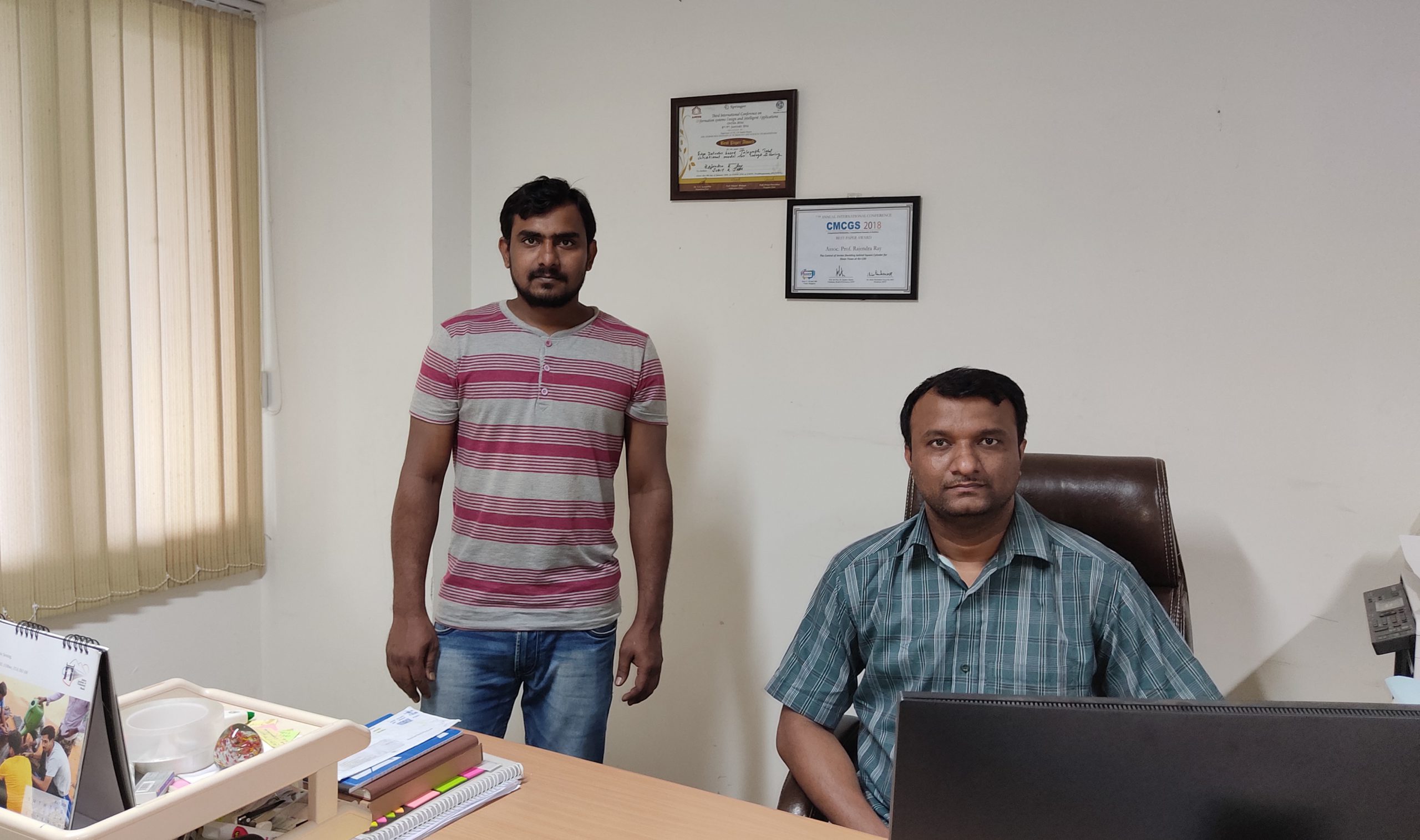The system will be used for observation or image capture in multiple applications in industrial, military, consumer and medical settings
New Delhi, NFAPost: Indian Institute of Technology Mandi researchers are using mathematical modelling to improve the quality of images captured by various imaging systems.
Imaging systems are used for observation or image capture in a variety of applications in industrial, military, consumer and medical settings. They typically comprise of a camera, imaging lens and possibly a source of light. Active Imaging is the reflection of light collected from an object when a light source is used to illuminate it.
The research team led by IIT Mandi School of Basic Sciences Associate Professor Dr. Rajendra Kumar Ray used mathematical methods to eliminate speckles.
They have used a grey level indicator-based nonlinear telegraph diffusion model which views the image as an elastic sheet, which when compressed, removes the speckles. The results of their work have been published in the Society for Industrial and Applied Mathematics (SIAM) Journal of Imaging Sciences.
Diffusion equation
The proposed technique uses the benefit of the combined effects of diffusion equation as well as the wave equation. The wave nature of the system preserves the high oscillatory and texture patterns in an image. One of the main advantages of this partial differential equation (PDE)-based approach is that it has a strong theoretical base, which is not always certain for a non-PDE based approach.
“Operating our camera under flash mode is a simple example of active imaging. Active imaging is extensively used in many high-tech applications ranging from biomedical imaging to satellite-based surveillance,” said IIT Mandi School of Basic Sciences Associate Professor Dr. Rajendra Kumar Ray.
The quality of images generated using some active imaging techniques are degraded by the presence of ‘speckles’. Speckles render the images grainy and result in loss of details. They can be caused by the imaging equipment itself or by the external environment associated with image capture, transfer or storage.
Basic sciences
IIT Mandi School of Basic Sciences Associate Professor Dr. Rajendra Kumar Ray said speckles are common in ultrasound, laser and synthetic aperture radar (SAR) images.
“These types of imaging systems are extensively used in critical applications like military surveillance and medical diagnosis. The poor image quality due to speckles, not only makes analysis unreliable or even dangerous but also renders automated image processing tasks difficult,” said IIT Mandi School of Basic Sciences Associate Professor Dr. Rajendra Kumar Ray.
IIT Mandi School of Basic Sciences Associate Professor Dr. Rajendra Kumar Ray said complex despeckling operations are therefore necessary to extract the actual image signal from the speckle noise.
Structural details
“The proposed approach enjoys the benefits of both telegraph-diffusion equation and the grey level of the image, which is not only robust to remove noise from images but also preserves image structural details”, says IIT Mandi School of Basic Sciences Associate Professor Dr. Rajendra Kumar Ray on the superiority of their method over existing despeckling approaches in its genre.
The researchers applied their model on test images and a few real-time SAR images, into which defects were deliberately introduced. They then compared the despeckling efficiency of their model with other existing models and showed that their model was superior to others.
“Our next aim is to apply this model into biomedical and SAR image processing”, says IIT Mandi School of Basic Sciences Associate Professor Dr. Rajendra Kumar Ray about the future of this development.
Imaging application
The removal of speckles is, as can be expected, critical in medical imaging applications, as well as in defence applications for surveillance operations. Apart from these high-tech applications, despeckling will also find use in imaging activities including cinematography and photography.
Since the first batch of 97 students joined in July 2009, IIT Mandi has grown to currently host 125 faculty and 1,655 students who are enrolled in various programmes of studies in undergraduate, postgraduate and research programmes, and 1,141 alumni.
IIT Mandi is a fully residential campus with 1.4 lakh sq. m. buildings completed. It has a guest house with 88 rooms, an 750-seater Auditorium, campus school, sports complex and hospital.
IIT Mandi has four Academic Schools and three major Research Centers. The Schools are: School of Computing and Electrical Engineering, School of Basic Sciences, School of Engineering, and School of Humanities and Social Sciences. The Centers are: Advanced Materials Research Centre (AMRC; set up with an investment of Rs. 60 crore), Centre for Design and Fabrication of Electrical Devices (C4DFED; has Rs. 50 crore worth of fabrication tools), and BioX Centre (has acquired research equipment worth Rs. 15 crore). In 2017, the Department of Biotechnology, Government of India, selected IIT Mandi to lead the prestigious Rs. 10 crore FarmerZone® Project.
Industry aspiration
To cater to the growing and changing needs of Indian industry and the aspirations of students, IIT Mandi has introduced 7 B.Tech., 7 M.Tech., 5 M.Sc., 4 Ph.D., 1 I-Ph.D and 1 M.A programmes in the past 10 years. The unique, project-oriented B.Tech. curriculum is centered around its 4-year long Design and Innovation stream. From August 2019, IIT Mandi started 3 new and unique B. Tech. programmes in Data Science and Engineering, Engineering Physics, and Dual Degree in Bioengineering.
Since the inception of the Institute, IIT Mandi faculty have been involved in over 275 Research and Development (R&D) projects worth more than Rs. 120 crore. In the past 10 years, the Institute has signed Memorandum of Understanding (MoU) with as many as 11 international and 12 national universities.
IIT Mandi Catalyst, first Technology Business Incubator in Himachal Pradesh, has helped over 75 startups since 2017 and is changing both the industry profile and entrepreneurial mindset in the state. So far, Catalyst has secured external funding of Rs. 24 crore from various funding agencies. Enabling Women of Kamand Valley (EWOK) is another innovative programme run by IIT Mandi, which focuses on imparting skills training to rural women to enable them to start village-scale businesses.
IIT Mandi has been ranked No. 20 in the Engineering Institutions Category in the India Rankings 2019 released by National Institutional Ranking Framework, Ministry of Human Resources Development, Govt. of India. In the Outreach and Inclusivity metric of NIRF, IIT Mandi is 1st among all 23 IITs.





